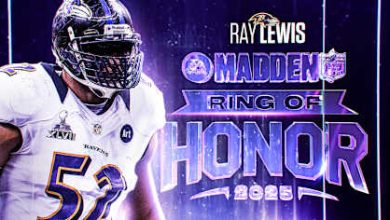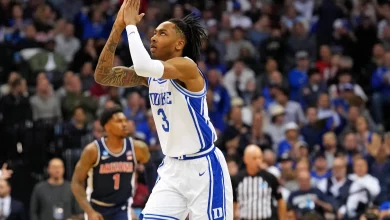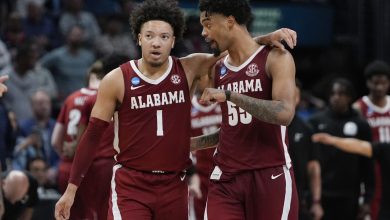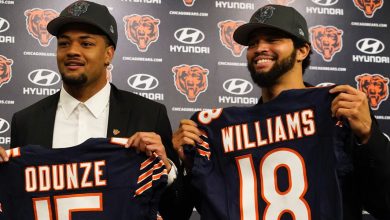In the college football NIL video game deal, how much would Ryan Williams and others receive?

**The College Football NIL Video Game Deal: How Much Would Ryan Williams and Others Receive?**
The announcement of the return of a college football video game—*EA Sports College Football*—was met with a massive wave of excitement from fans, players, and the entire college football community. After nearly a decade-long hiatus, college football fans were eager to once again take control of their favorite teams and athletes in the digital realm. What made the upcoming release of *EA Sports College Football* even more significant was the incorporation of Name, Image, and Likeness (NIL) rights, which would allow college athletes to receive compensation for their participation in the game. This new development brought a sea change to the traditional dynamics of college athletics, allowing players like Ryan Williams, a future star of the Alabama Crimson Tide, to earn money from the game’s success.
As college football video games go, *EA Sports College Football* represents the intersection of sports, business, and technology, creating an opportunity for players to capitalize on their NIL rights in a way that was previously unimaginable. The concept is revolutionary for athletes like Williams and his peers, whose likenesses will be featured in the game alongside the teams they play for. But the question on the minds of many is: How much will players like Ryan Williams and other athletes receive from this game? To answer that, we need to explore the nature of NIL deals, the structure of video game compensation, and the potential earnings for players at the top of their game.
### Understanding NIL Deals and Their Impact on College Football
Before diving into the specifics of compensation, it’s essential to understand how NIL deals work and how they have reshaped college athletics. Since the NCAA officially allowed athletes to profit from their name, image, and likeness in 2021, college athletes have been able to sign endorsement deals, monetize their social media platforms, and profit from personal branding, all while maintaining their eligibility to compete in collegiate sports. NIL has revolutionized the landscape of college athletics, providing new opportunities for athletes to earn money and even negotiate deals with major brands, companies, and video game developers.
In the case of *EA Sports College Football*, the game developer has partnered with the NCAA to offer compensation to athletes whose names, likenesses, and attributes will appear in the game. This marks the first time in history that college football players will receive direct financial compensation for their digital representations in a video game. The agreement allows athletes to receive a share of the revenue generated from the game, and each player’s compensation will likely be determined based on various factors, including their popularity, performance, and position in the game.
### Ryan Williams and the New NIL Landscape
Ryan Williams, a top-tier recruit for the Alabama Crimson Tide and one of the brightest young stars in college football, will be one of the players whose likeness will be used in *EA Sports College Football*. As a 5-star recruit known for his blazing speed, strong hands, and ability to make big plays, Williams will likely be one of the most prominent names in the game, assuming he lives up to the hype during his time in Tuscaloosa. His ability to dominate on the field will directly translate to his presence in the game, and with a large fan following, Williams could be among the top earners from the *NIL* video game deal.
However, it’s important to note that Ryan Williams’ earnings from the game won’t be solely based on his performance or popularity. Several key factors will determine how much he will make. These include the following:
1. **Player Popularity and Marketability**
One of the most significant factors influencing how much Williams and other players will earn is their overall popularity. For example, Williams is already considered one of the top recruits in the country, with his name circulating widely among college football fans and media outlets. His potential to be a household name gives him considerable market value, which translates into a higher compensation rate in the video game.
2. **Performance and Position**
Players who are projected to be standout performers in college football, like Williams, will likely be assigned higher ratings in the game, making their virtual counterparts more valuable to fans and gamers. The higher the player’s rating in the game, the more likely they are to earn significant compensation from their digital representation. Positions also play a crucial role—quarterbacks, wide receivers, running backs, and other skill positions tend to be more valuable in video games because they are featured more prominently and have a direct impact on gameplay.
3. **The Number of Players Featured**
College football teams feature dozens of players, and the game’s developers will have to decide how many players they include in the game. While star players like Williams will undoubtedly receive more attention, the compensation structure may also account for less prominent athletes, who may still see their likenesses included but earn less than the top performers.
4. **Revenue Sharing and Compensation Model**
The overall earnings of the video game will also affect how much players receive. The *EA Sports College Football* franchise will likely generate millions of dollars in revenue, with a significant portion allocated to compensating the athletes whose likenesses appear in the game. It’s important to understand how the revenue will be split—whether it will be based on individual player performance, popularity, or even the total number of players in the game.
5. **Collective Bargaining and Legal Agreements**
Since NIL deals are still relatively new, the specifics of compensation models remain somewhat fluid. In theory, there may be a collective bargaining system in place where players’ representatives or unions negotiate the amount of compensation for all athletes involved in the game. These agreements would take into account various factors, such as the revenue generated from game sales, in-game purchases, and the duration of licensing agreements.
### Projecting Ryan Williams’ Potential Earnings
While exact figures for players like Ryan Williams are difficult to predict, we can make some educated estimates based on the general structure of video game compensation deals and the success of previous college sports video games.
Let’s consider the following:
1. **Revenue Breakdown:**
Based on the popularity of the *EA Sports College Football* franchise, the game could easily gross millions of dollars in its first year. If we assume the game generates $100 million in revenue (a conservative estimate considering the vast fan base of college football), and if athletes receive around 10% of that revenue (a general industry standard for video game royalties), then $10 million would be allocated to player compensation.
2. **Player Pool:**
The number of athletes whose likenesses are used will influence the individual payouts. If there are 1,000 players featured in the game, this would mean an average payout of around $10,000 per player. However, star athletes like Ryan Williams, who are more prominently featured, could see payouts as high as $50,000 or more. If Williams is featured as a top-rated player and marketed heavily by the game, he could receive a significantly higher share of the revenue.
3. **Top Earning Athletes:**
Just like in any industry, there will be a distribution of earnings. The most popular athletes, such as Williams, could earn much higher sums compared to lesser-known players. Top quarterbacks, running backs, and wide receivers in high-demand schools like Alabama, Ohio State, and Clemson will likely earn more. For top-tier players, compensation could range from $25,000 to $100,000 or more, depending on their prominence within the game and their role in the virtual football landscape.
### What About Other Players?
Not all players in *EA Sports College Football* will receive the same amount, but the concept of fair revenue sharing is important. For example, while Ryan Williams and other high-profile athletes could earn significant sums, players who aren’t as prominent—such as backup players or those in less marketable positions—would receive a smaller share. These players may still receive several thousand dollars, which is a significant improvement from the days before NIL deals.
Furthermore, the presence of NIL deals offers an important opportunity for players who might not be in the spotlight to monetize their presence in the game. For instance, a special teams player or a second-string linebacker who may not receive a large endorsement deal elsewhere might still find themselves earning thousands of dollars simply for being in the game. In the past, these players would have missed out entirely on this revenue.









